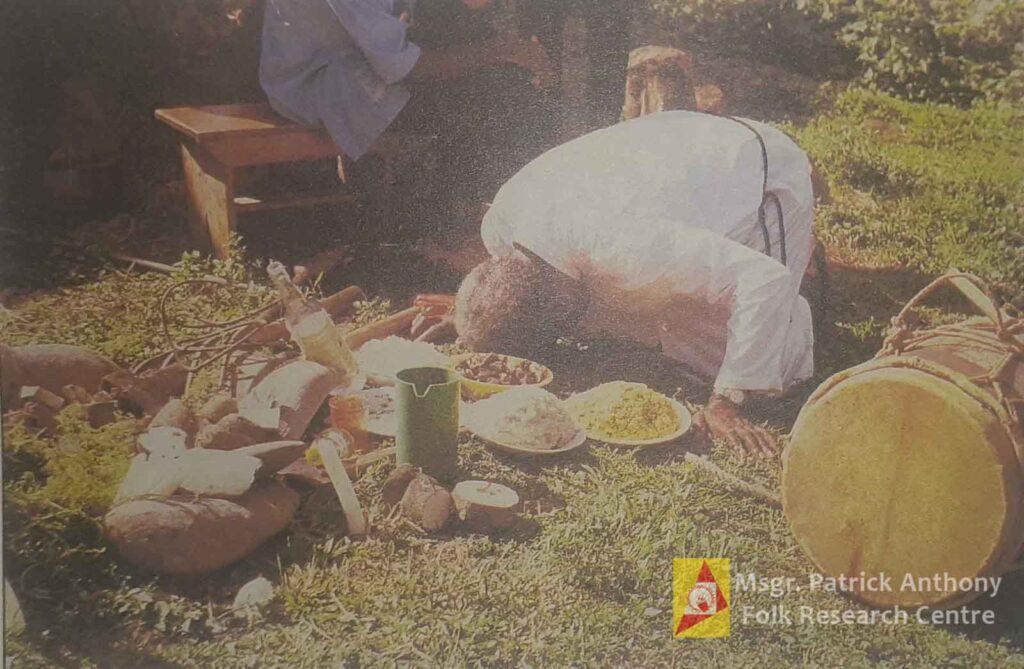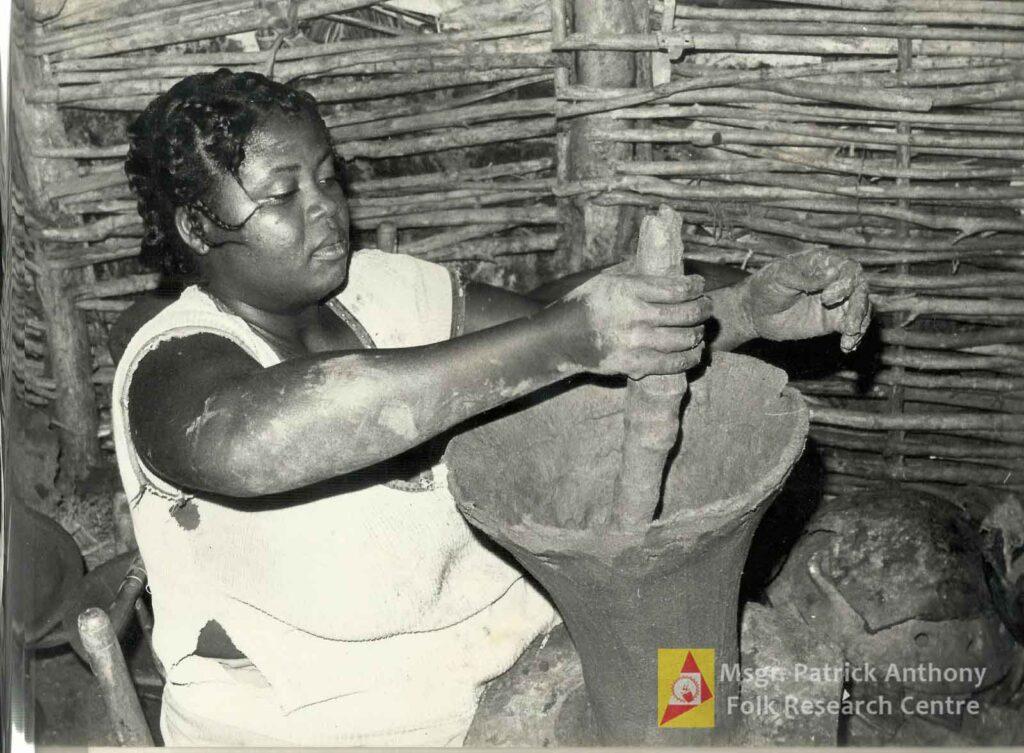TRADITIONAL PRACTICES
KOUDMEN
Koudmen is a form of co-operative self-help practised in St. Lucia. It consists of a group of co-operative workers who give voluntary help to members of their own community and sometimes neighbouring communities upon special request. Such tasks as wood-sawing, clearing land for cultivation of provision gardens, making farine or “toloman” (tapioca), building or shifting a house, and transporting planting materials or materials for building a house, lend themselves to the Koudmen arrangement.
The organizer or organizers provide the food and drink (which usually consists of some alcoholic beverage like rum). The tools needed are also provided by the organizer e.g. axes, pits, saws, sledgehammers, crowbars
FRC 2023 Koudmen
etc where necessary. Sometimes these are borrowed from other friends free of cost. The workers work hard, zealously, and diligently for many hours, keeping up their spirits by singing, joking, or calling out challenges or words of encouragement to each other. Periodic serving from the liquor bottle helps to add speed and self-abandonment to the task on hand.
No one is ever paid, nor does anyone even expect to be paid in hard cash at the end of a Koudmen, although each organizer should always be ready to give payment in kind i.e. join a Koudmen, whenever he is especially asked by the next organizer.
Excerpt: “A Cultural Calendar of St. Lucia”, FRC, 1992.

High Priest Praise at alter
KéLé CEREMONY
This is an African religious ceremony involving the sacrifice of an unblemished sheep. It is performed in the north-eastern region comprising Babonneau, Fond Assau, and their environs. It was to this religion that the last borne-and-bred Africans who came to Saint Lucia were sent and the area has a certain strong African retentions. There is a procession to a place of running water, prayers, offerings of food at an alter, the beheading of the sheep and drinking of its blood. The functions the ceremony includes honouring the gods Ogun and Shango, thanksgiving and supplication. The rites of the Kele ceremony have been passed on through families who identified themselves as “Nèg Djiné”. There is a high priest who, before he dies, passes on his role to another man. All the participants, including the high priest, are also church-going Christians who have no difficulty in blending the two traditions in their personal lives.
INDIGENOUS POTTERY
The production of ceramics by traditional means is a tradition handed down from the Amerindians, that is still practiced mainly in the district of Choiseul. It is there that the special clay used for this indigenous pottery process can be found in sufficient quantities. The almost exclusively female producers, mine and clean the clay, then work it through different stages of kneading and shaping. A variety of products including coalpots, cooking pots, cups, other domestic utensils, and even ornamental articles, are built up and shaped from the raw clay in this method. After a few days of final smoothing, polishing and drying, these earthenware products are piled up in a huge heap along with different grades of combustible materials. The heap is set ablaze in a huge fire and the pots go through a firing or baking process. After the fired products are cooled down, then they become the final products ready for sale at the market or other venues.

Coalpot Making
Traditionally, the more popular ceramic products made included mainly cooking vessels and the coalpot (or local coal stove) in particular. However, the increasing popularity of modern technological products like the gas stove and the gas cooker, and the consequent decrease in demand for the coalpot, has led to a shift in emphasis of production to include a lot more ornamental articles like flower pots, avses and small sculptures.
HOME DECORATING MADE FROM SCRATCH
In days past, house-proud Lucias, particularly in rural areas where the early department stores were a long time coming, were adept at making their own decorations. From curtains to intricate flowers of paper and dried material, the time spent creating unique decorations was a time spent together where young and old could interact on a project and share pride in the final outcome. The homes, filled with artistic clutter of Victorian-style decor, subsequently told stories of years of added and adapted decorations and refurbishment, and a cherished piece from a long-gone relative carried extra sentiment of knowing that it was a creation of their own hands.
